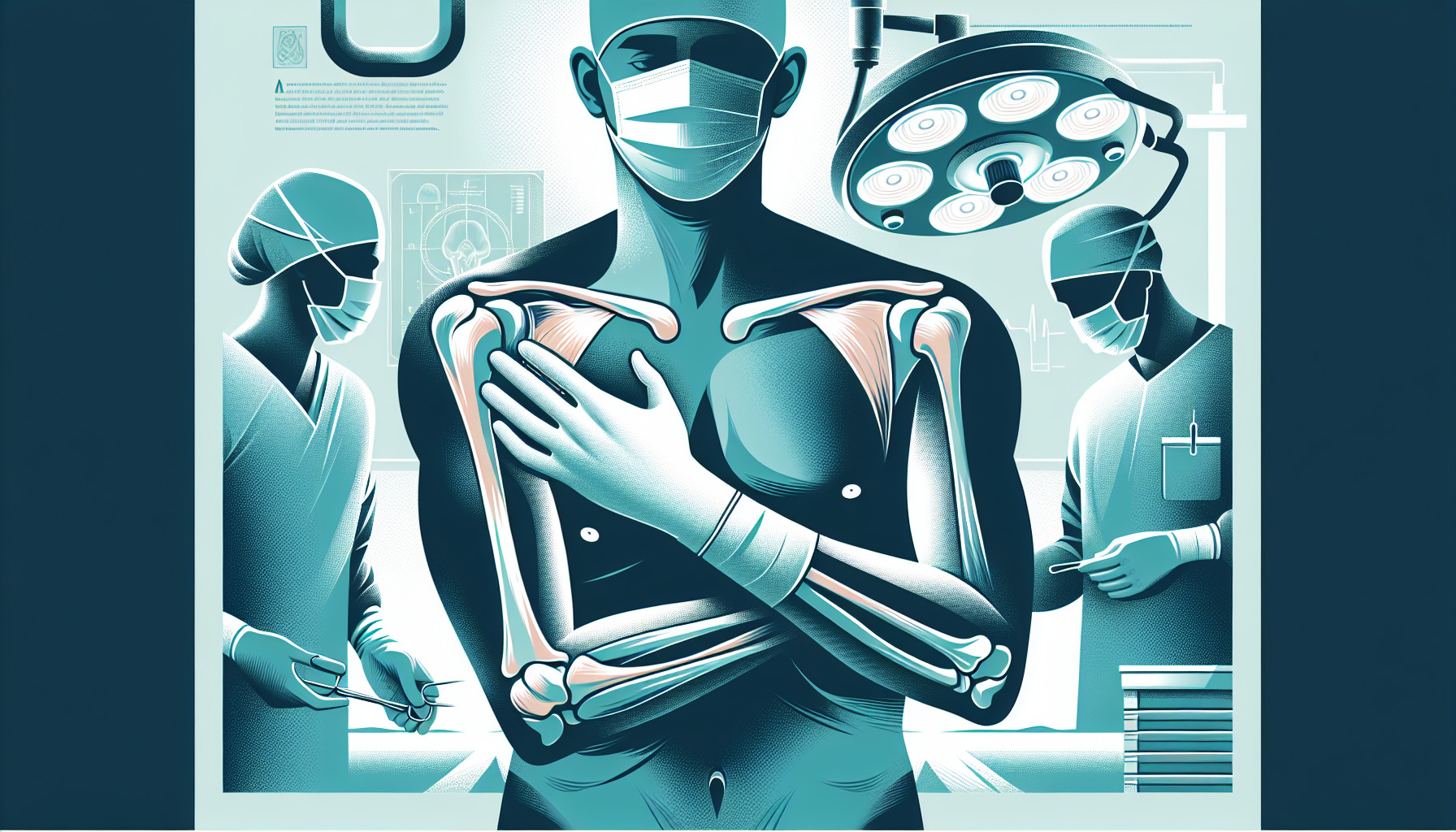Our Summary
This research paper discusses the issue of joint infection, specifically periprosthetic joint infection (PJI), which is a common reason for painful shoulder replacements and subsequent revision surgeries. The bacteria Cutibacterium acnes is often responsible for these infections but is hard to detect due to its slow growth. The paper reviews various tests to diagnose this type of infection, including general tests and more specific tests that identify the exact bacteria causing the infection.
In cases where fluid is not present in the joint (dry aspiration) and an infection is suspected, a biopsy, or tissue sample, is recommended. The paper also discusses various treatment options for these infections. For acute (short-term) infections, the options include: cleaning the area with special antiseptic solutions, replacing all removable components of the joint, and leaving the implant as is. For late (long-term) infections, occurring more than four weeks after the initial surgery, treatment options include: using a permanent spacer, completing a single-stage revision, or a two-stage revision with a temporary spacer.
The best results are achieved with single-stage revisions, where the success rate is similar to that of two-stage revisions. However, for single-stage revisions, the specific bacteria causing the infection should be identified beforehand so that the correct antibiotics can be mixed into the cement used for the new joint and also used systemically (throughout the body) to support the surgery.
FAQs
- What is a periprosthetic joint infection (PJI) and what causes it?
- What are the treatment options for periprosthetic joint infection of shoulder arthroplasties?
- How is a periprosthetic shoulder infection diagnosed?
Doctor’s Tip
A helpful tip a doctor might tell a patient about shoulder replacement is to be vigilant about signs of infection, such as increased pain, redness, swelling, or warmth around the shoulder joint. It is important to seek medical attention promptly if any of these symptoms occur, as early detection and treatment of periprosthetic joint infection can help prevent complications and improve outcomes. Additionally, following post-operative care instructions, including proper wound care and completing any prescribed antibiotic regimen, is essential for a successful recovery after shoulder replacement surgery.
Suitable For
Patients who are typically recommended for shoulder replacement surgery include those with severe shoulder arthritis, rotator cuff tears that cannot be repaired, severe fractures of the shoulder joint, and failed previous shoulder surgeries. Additionally, patients who have exhausted non-surgical treatment options such as physical therapy, medications, and injections may also be candidates for shoulder replacement. It is important for patients to discuss their specific situation with a healthcare provider to determine if shoulder replacement is the right option for them.
Timeline
Before shoulder replacement surgery: The patient will typically have been experiencing severe shoulder pain, stiffness, weakness, and limited range of motion for an extended period of time. They may have tried conservative treatments such as physical therapy, medications, injections, and lifestyle modifications without success. The patient will undergo a thorough evaluation by their orthopedic surgeon to determine if shoulder replacement surgery is necessary.
Day of surgery: The patient will be admitted to the hospital or surgical center and undergo anesthesia before the surgery. The orthopedic surgeon will remove the damaged parts of the shoulder joint and replace them with artificial components made of metal, plastic, or ceramic. The surgery typically takes a few hours, and the patient will then be monitored in the recovery room before being transferred to a hospital room or sent home.
Post-surgery recovery: The patient will likely experience pain, swelling, and discomfort in the shoulder area immediately after surgery. They will be prescribed pain medications and instructed on how to care for the incision site. Physical therapy will be an important part of the recovery process to help regain strength, flexibility, and range of motion in the shoulder. The patient will have follow-up appointments with the orthopedic surgeon to monitor their progress and ensure proper healing.
Months to years after surgery: The patient should experience improved shoulder function and reduced pain compared to before the surgery. They may still need to continue with physical therapy and follow-up appointments to ensure the shoulder joint is functioning properly. It is important for the patient to follow any restrictions or recommendations provided by their orthopedic surgeon to prevent complications and ensure the longevity of the shoulder replacement.
What to Ask Your Doctor
- What are the potential risks and complications associated with shoulder replacement surgery?
- How long is the recovery process and what can I expect in terms of pain management?
- How long do shoulder replacements typically last and what factors can affect the longevity of the implant?
- What specific tests will be performed to diagnose any potential infections after the surgery?
- What treatment options are available if a periprosthetic joint infection is detected?
- What type of antibiotics will be used during and after the surgery to prevent infection?
- What is the success rate for different treatment options for periprosthetic joint infections?
- How will my mobility and function be affected after the surgery and what can I do to optimize my recovery?
- Are there any restrictions or limitations I should be aware of after the surgery?
- How often will I need to follow up with you after the surgery for monitoring and potential complications?
Reference
Authors: Fink B, Sevelda F. Journal: Biomed Res Int. 2017;2017:4582756. doi: 10.1155/2017/4582756. Epub 2017 Dec 20. PMID: 29423407
